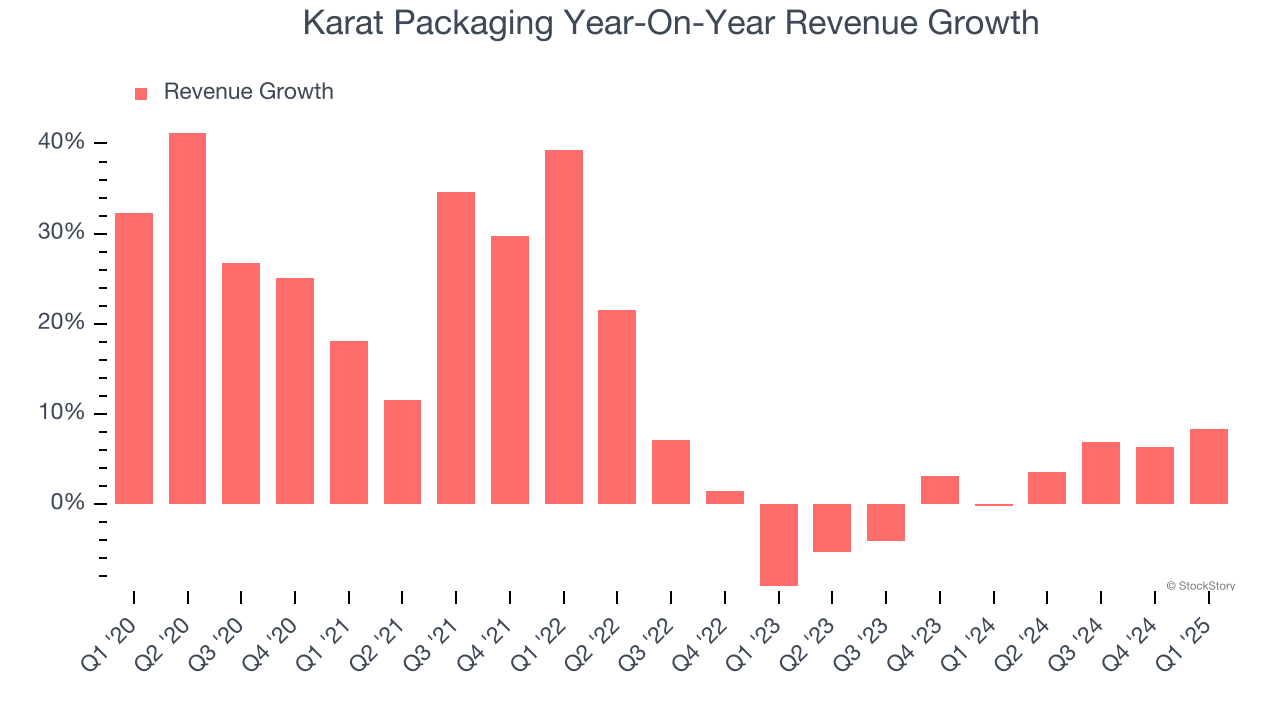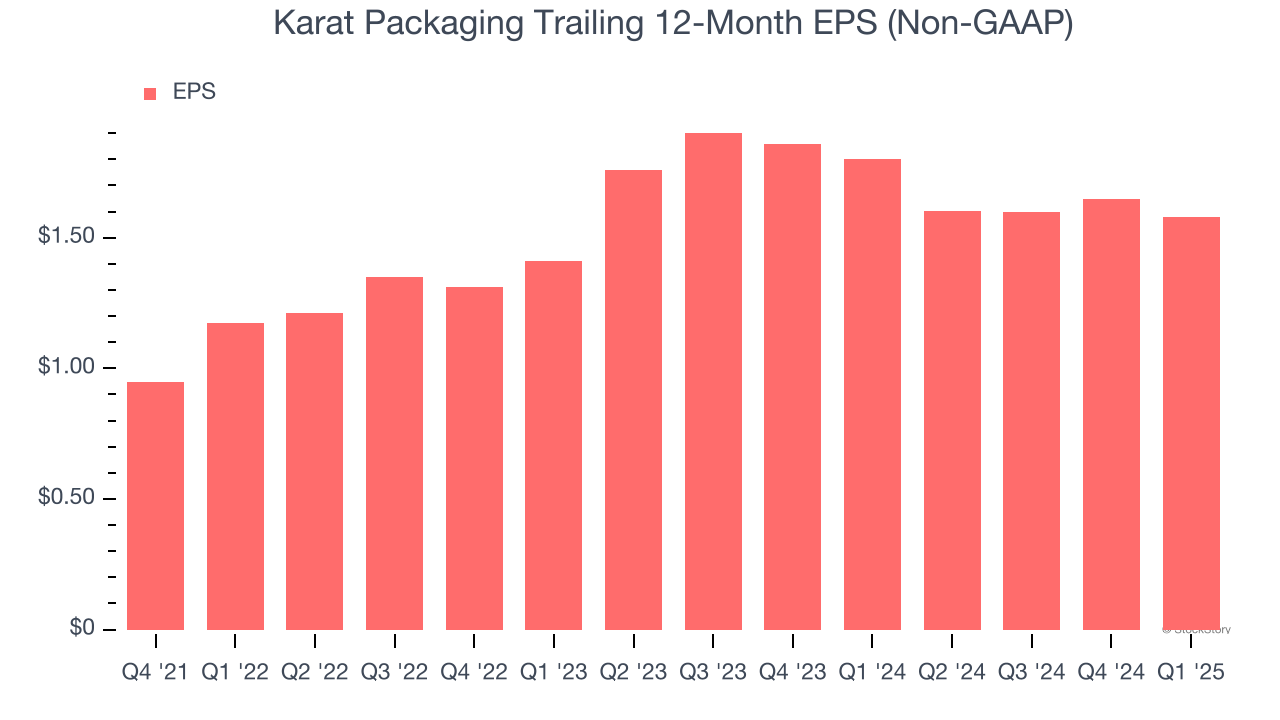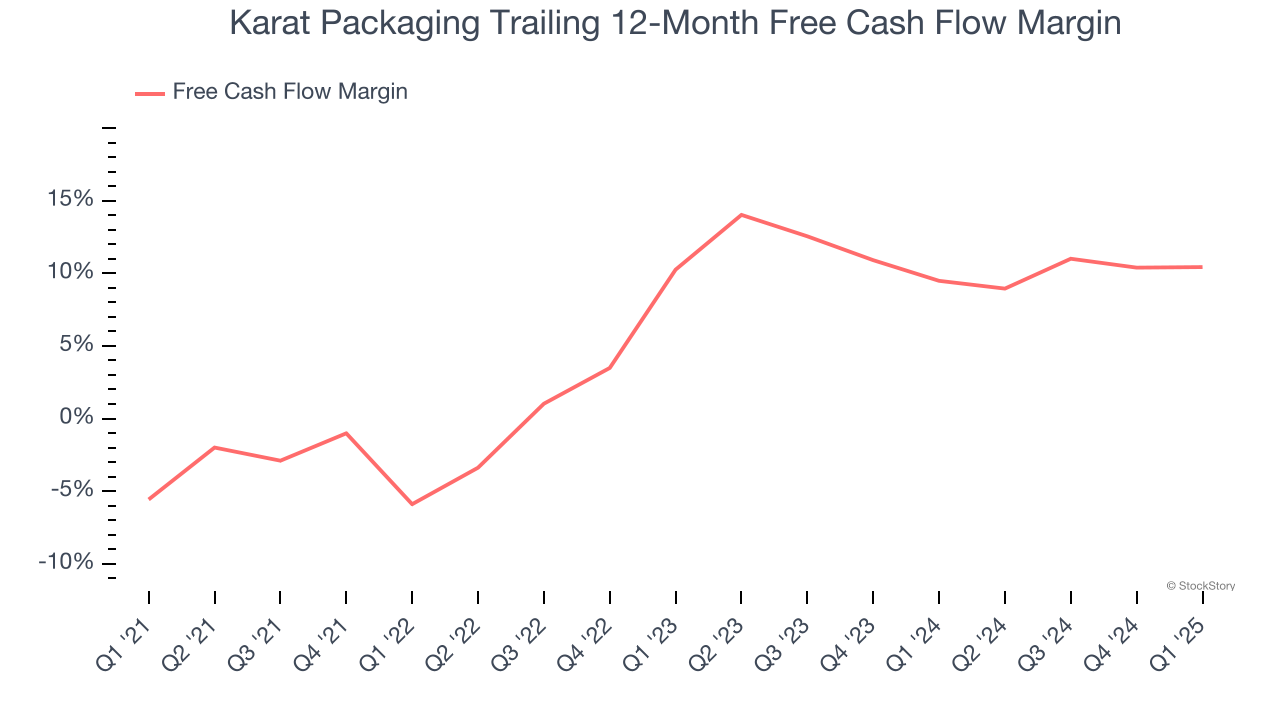
Over the last six months, Karat Packaging’s shares have sunk to $28.25, producing a disappointing 8.1% loss - a stark contrast to the S&P 500’s 4.1% gain. This might have investors contemplating their next move.
Is there a buying opportunity in Karat Packaging, or does it present a risk to your portfolio? Dive into our full research report to see our analyst team’s opinion, it’s free.
Why Is Karat Packaging Not Exciting?
Even with the cheaper entry price, we're cautious about Karat Packaging. Here are three reasons why we avoid KRT and a stock we'd rather own.
1. Lackluster Revenue Growth
Long-term growth is the most important, but within industrials, a stretched historical view may miss new industry trends or demand cycles. Karat Packaging’s recent performance shows its demand has slowed significantly as its annualized revenue growth of 2.1% over the last two years was well below its five-year trend. 
2. Recent EPS Growth Below Our Standards
Although long-term earnings trends give us the big picture, we like to analyze EPS over a shorter period to see if we are missing a change in the business.
Karat Packaging’s EPS grew at an unimpressive 5.9% compounded annual growth rate over the last two years. On the bright side, this performance was higher than its 2.1% annualized revenue growth and tells us the company became more profitable on a per-share basis as it expanded.

3. Mediocre Free Cash Flow Margin Limits Reinvestment Potential
Free cash flow isn't a prominently featured metric in company financials and earnings releases, but we think it's telling because it accounts for all operating and capital expenses, making it tough to manipulate. Cash is king.
Karat Packaging has shown weak cash profitability over the last five years, giving the company limited opportunities to return capital to shareholders. Its free cash flow margin averaged 4.4%, subpar for an industrials business.

Final Judgment
Karat Packaging isn’t a terrible business, but it doesn’t pass our bar. Following the recent decline, the stock trades at 10.3× forward EV-to-EBITDA (or $28.25 per share). Beauty is in the eye of the beholder, but our analysis shows the upside isn’t great compared to the potential downside. We're pretty confident there are more exciting stocks to buy at the moment. We’d suggest looking at one of our top software and edge computing picks.
High-Quality Stocks for All Market Conditions
When Trump unveiled his aggressive tariff plan in April 2024, markets tanked as investors feared a full-blown trade war. But those who panicked and sold missed the subsequent rebound that’s already erased most losses.
Don’t let fear keep you from great opportunities and take a look at Top 5 Growth Stocks for this month. This is a curated list of our High Quality stocks that have generated a market-beating return of 183% over the last five years (as of March 31st 2025).
Stocks that made our list in 2020 include now familiar names such as Nvidia (+1,545% between March 2020 and March 2025) as well as under-the-radar businesses like the once-micro-cap company Kadant (+351% five-year return). Find your next big winner with StockStory today.
StockStory is growing and hiring equity analyst and marketing roles. Are you a 0 to 1 builder passionate about the markets and AI? See the open roles here.
